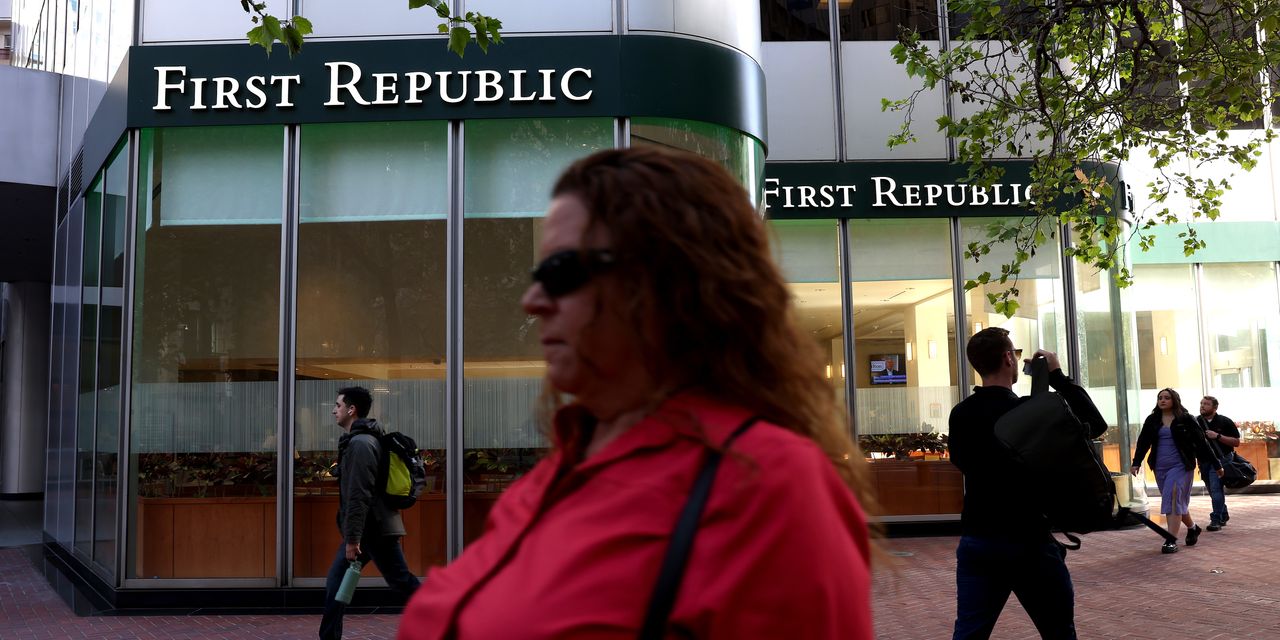Mayday? You might think so, given stalling U.S. economic growth and turbulence among banks. But the Federal Reserve will ignore those false alarms and raise its key policy interest rate again this coming week, as inflation remains sticky due to a resilient labor market.
That should come as no surprise, however, as the interest-rate futures markets have consistently priced in one more increase of 25 basis points (one-quarter percentage point) in the central bank’s federal-funds target, from the current 4.75%-5% range, at the meeting of the Federal Open Market Committee that concludes on Wednesday. That would put it in line with the 5.1% median year-end projection set at the last FOMC confab ended on March 22, which suggests the Fed’s rate policy should be on autopilot for the rest of 2023.
The markets disagree, however, and see the Fed reversing course as early as autumn. Minutes of the March FOMC meeting show the central bank’s own staff forecasting the start of a recession later this year. This is likely to be the main issue addressed by the FOMC’s policy statement on Wednesday afternoon and Fed Chairman Jerome Powell’s news conference afterward, more so than the rate hike to an expected 5%-5.25% (which had an 84.4% probability as of Friday, according to the CME FedWatch site).
The apparent slowing of the economy and the banking travails might suggest that the monetary authorities would consider forgoing further rate hikes after the 475 basis points over the past year. But inflation, while off its four-decade peak hit last year, remains more than twice the Fed’s 2% target, and its progress toward that goal has faltered.
Based on gross domestic product, real growth slowed to a 1.1% seasonally adjusted annual rate in the first quarter, from 2.6% in the fourth quarter of 2022. But that masked an underlying improvement. Most of the slowing reflected a drawdown of inventories. Strong consumer spending cleared away those excess stocks, resulting in a 3.4% annual rise in real final sales in the first quarter, up sharply from 1.1% in the prior three months.
The FOMC went ahead with its March rate hike after the failure of Silicon Valley Bank, about which the central bank did a partial mea culpa on Friday.
First Republic Bank
(ticker: FRC), whose stock shed 75% in the past week and which could be headed for Federal Deposit Insurance Corp. receivership, kept banking worries in the headlines in recent days.
The travails among a few regional banks shouldn’t deter the Fed from its primary task of guiding the economy back to price stability, however. The aim of tightening monetary policy was to restrict credit to the private sector, said Vincent Reinhart, chief economist and macro strategist at Mellon and former secretary and economist of the FOMC. Such disruptions are what should be expected. The surprise is that financial conditions haven’t tightened more, he added in an interview.
Indeed, much of the dislocation among banks has been concentrated in First Republic, according to Douglas Peta, chief U.S. investment strategist at BCA Research. There is no evidence yet that banks are less willing to lend because of the failures of Silicon Valley and Signature banks, he added.
The banking news was superseded by the bigger-than-expected rise in the Employment Cost Index, the Fed’s preferred gauge of compensation expenses, reported on Friday. The ECI increased at a 4.8% annual rate in the first three months of 2022. Powell has indicated something closer to 3.5% wage growth would be consistent with the Fed’s 2% inflation target, J.P. Morgan chief U.S. economist Michael Feroli wrote on Friday.
One important piece of information the FOMC will have when it sits down at the conference table will be preliminary results of its Senior Loan Officer Opinion Survey, both Reinhart and Peta pointed out. This should give the latest insight into the impact of the banking turmoil ahead of the survey’s public release, expected the following week.
The FOMC faces an economy that continues to grow despite localized bank problems, but with inflation remaining far above the Fed’s professed 2% target. Yet the market still looks for rate cuts later this year, despite the Fed’s projection of holding steady after the next expected hike. How Powell squares that contradiction will be a key question to be answered this coming week.
Write to Randall W. Forsyth at [email protected]
Read the full article here


